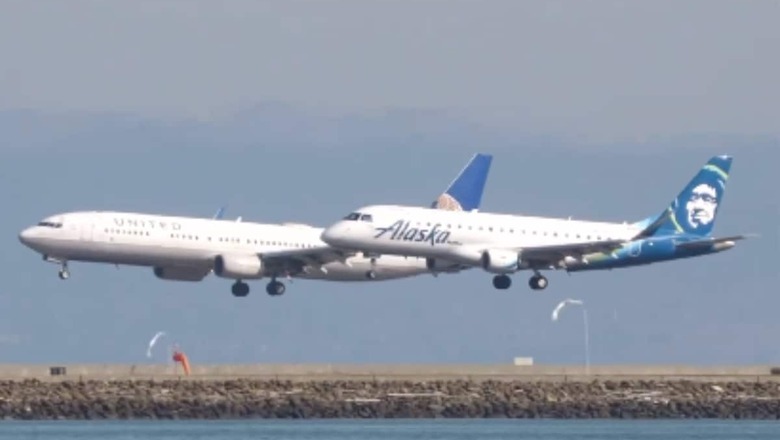
views
A stunning video of two passenger planes making a parallel landing next to each other is raking in likes. The video shows both planes making a smooth and synchronised landing at the San Francisco International Airport (SFO). This footage was recently shared on Instagram by an aviation-centric account. Its caption read, “United Airlines and Alaska Airlines coming side by side into SFO to make a gorgeous parallel landing on 28L and 28R! One of the few places in the world where you can watch planes land side by side like this!” This clip has over 76,000 likes and over 2.1 million views.
A post shared by Nick (@nickflightx)
In the comments, many people shared their own experiences of witnessing parallel landing of airplanes. An Instagram user wrote, “I’ve actually been on a plane parallel landing at SFO. It’s cool.” Another person recalled, “Did that at SFO 30 years ago. I was flying an M20J landing next to a DC-10. It was awesome.”
Expressing an opposite sentiment, an Instagram user exclaimed, “This is just crazy and stupid and reckless.” In response to this, another person explained, “Sorry, but it isn’t reckless. The two planes used a different runway. Known as parallel runways, some airports have 2-5 runways where planes can land or take off at the same time. I am from Sydney Australia and in Sydney airport we sometimes see planes land and take off at same time too. Just using different runways. When they take off the plane on the left turns left and the plane on the right turns right. Literally turning away from each other to avoid collision. And the runways are far apart as well. I’ve never been to America or Europe before but I know some airports have more than 2 runways where they allow planes to land and take off at the same time.”
It is interesting to note that even though it appears that airplanes are almost next to each other when they are making parallel landings, in reality, the runways are separated by more than 4,300 feet. As per Simple Flying, parallel arrivals are very rare and airport authorities only allow them when an airport is seeing significant one-way traffic. For instance, if an airport has an influx of arriving flights and fewer departing flights, they end up utilising parallel runways for arrivals which sometimes leads to parallel landings if the timing is right.
What's your reaction?



















Comments
0 comment